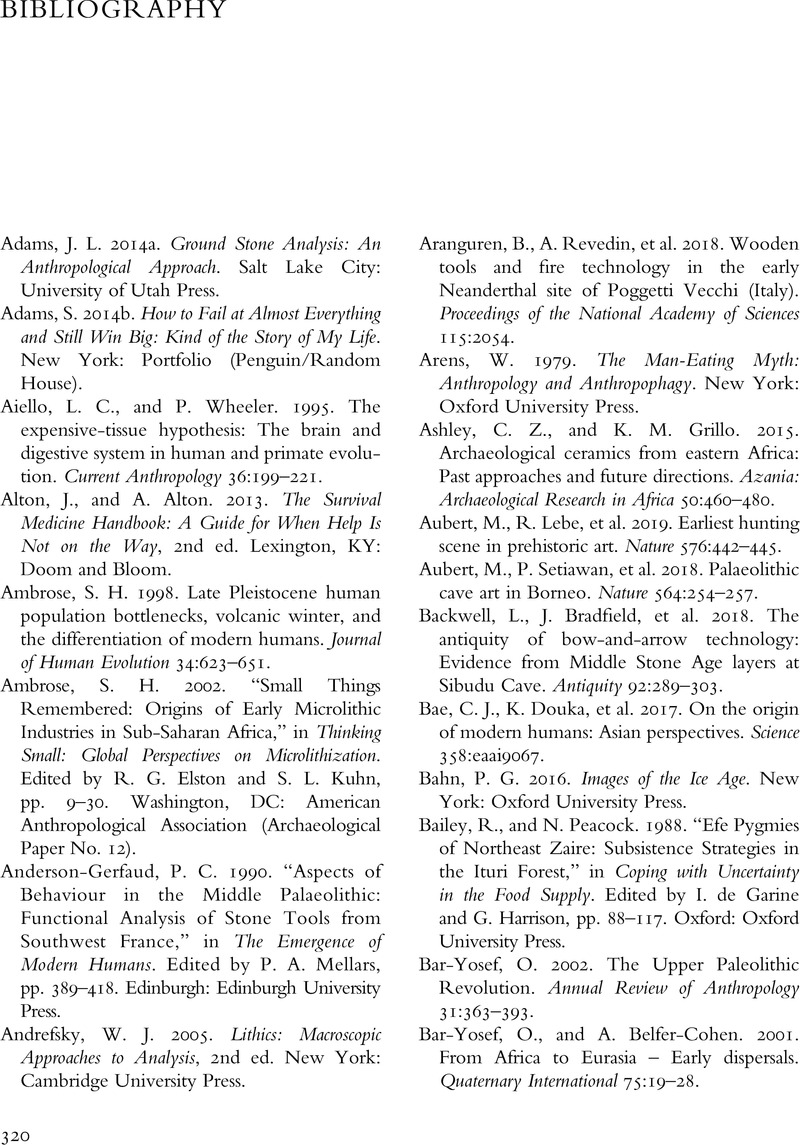Book contents
- The Unstoppable Human Species
- The Unstoppable Human Species
- Copyright page
- Dedication
- Contents
- Figures
- Tables
- Boxes
- Preface
- Acknowledgments
- Chapter 1 Introduction
- Chapter 2 Hard Evidence
- Chapter 3 Who Are These People?
- Chapter 4 How Did They Get Here?
- Chapter 5 Ancient Africans
- Chapter 6 Going East
- Chapter 7 Down Under
- Chapter 8 Neanderthal Country
- Chapter 9 Going North
- Chapter 10 A Brave New World
- Chapter 11 Movable Feasts
- Chapter 12 Distant Horizons and Stars Beckon
- Chapter 13 Unstoppable? Human Extinction
- Chapter 14 Conclusion
- Book part
- Glossary
- Bibliography
- Index
- References
Bibliography
Published online by Cambridge University Press: 16 March 2023
- The Unstoppable Human Species
- The Unstoppable Human Species
- Copyright page
- Dedication
- Contents
- Figures
- Tables
- Boxes
- Preface
- Acknowledgments
- Chapter 1 Introduction
- Chapter 2 Hard Evidence
- Chapter 3 Who Are These People?
- Chapter 4 How Did They Get Here?
- Chapter 5 Ancient Africans
- Chapter 6 Going East
- Chapter 7 Down Under
- Chapter 8 Neanderthal Country
- Chapter 9 Going North
- Chapter 10 A Brave New World
- Chapter 11 Movable Feasts
- Chapter 12 Distant Horizons and Stars Beckon
- Chapter 13 Unstoppable? Human Extinction
- Chapter 14 Conclusion
- Book part
- Glossary
- Bibliography
- Index
- References
Summary

- Type
- Chapter
- Information
- The Unstoppable Human SpeciesThe Emergence of Homo Sapiens in Prehistory, pp. 320 - 336Publisher: Cambridge University PressPrint publication year: 2023

